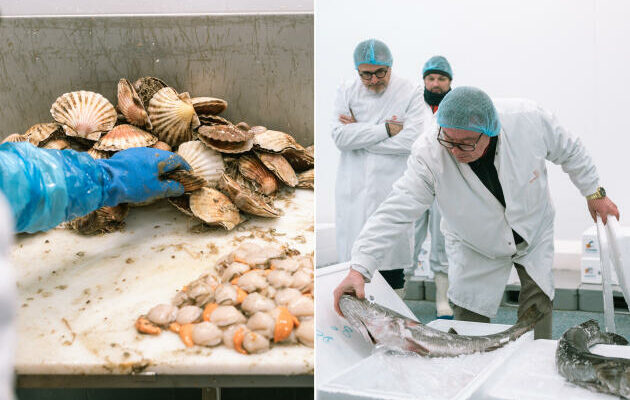Rungis is beautiful at night. The sprawling market town located in the southern suburbs of Paris never sleeps. And around 3:30 a.m., the uninterrupted waltz of heavy goods vehicles and couriers under the pale light of the street lamps has something hypnotic. The vehicles whirl around at an astonishing speed (obviously, Rungis has its own laws and its own highway code), in this strange city crisscrossed with avenues, covered with warehouses, teeming with handlers, where you can appear at the bend of a delivery of a crate of tomatoes (whatever the season), a superb turbot or a beef carcass.
Rungis is a behemoth without equal in the world: 232 hectares of surface area, more than 1,200 companies and nearly 13,000 employees, and, according to the latest activity report published in 2022, more than 1.7 million tonnes of products. processed food (including 68% fruits and vegetables). An avalanche of figures for a simple observation: without this monstrous hub, Ile-de-France (where 65% of buyers are concentrated) and part of the rest of the country would have a hard time filling their plates. “I am here to feed 18 million inhabitants”, boasts Stéphane Layani, the market’s CEO since 2012, while sipping a double espresso at La Cantine du troquet. The establishment, open to the public like the eighteen others present in Rungis (while purchases are reserved for professionals), offers, even before daybreak, soft madeleines and competitive pâtés under the leadership of chef Stéphane Bertignac.
In fact, Rungis’ turnover continues to increase and stands at 10,299 billion euros in 2022. The purchasing center welcomes market traders, retailers, but also restaurateurs (15% of annual turnover) which it is difficult to find on site. ” The Chiefs ? We do not see them anymore “, regrets Serge Nadaud. This historical wholesaler of the market, president of the National Confederation of tripe makers of France, watches over the tripe makers’ pavilion punctuated with beef tongues, livers or calf’s heads, ready to be deboned. “Before, they or their assistants came by at least twice a week to find the best sweetbreads. We could present the products, negotiate face to face, there was this human relationship which was the charm of the market. Today, it’s over: they come twice a year to scout, and that’s it. »
Serge Nadaud sat at a table at Veau qui téte, the restaurant nestled in the heart of the tripiers pavilion that he bought with other wholesalers to get it out of financial impasse. At the counter, tall guys in white coats consume coffee and mint water, trimming off the bits of fat. “This is where we still receive our customers”says the wholesaler, while a trilogy of veal (sweetbreads, kidneys, head) and a veal strawberry tempura tumble onto the table (remember, it’s 4:30 a.m.).
You have 70% of this article left to read. The rest is reserved for subscribers.
